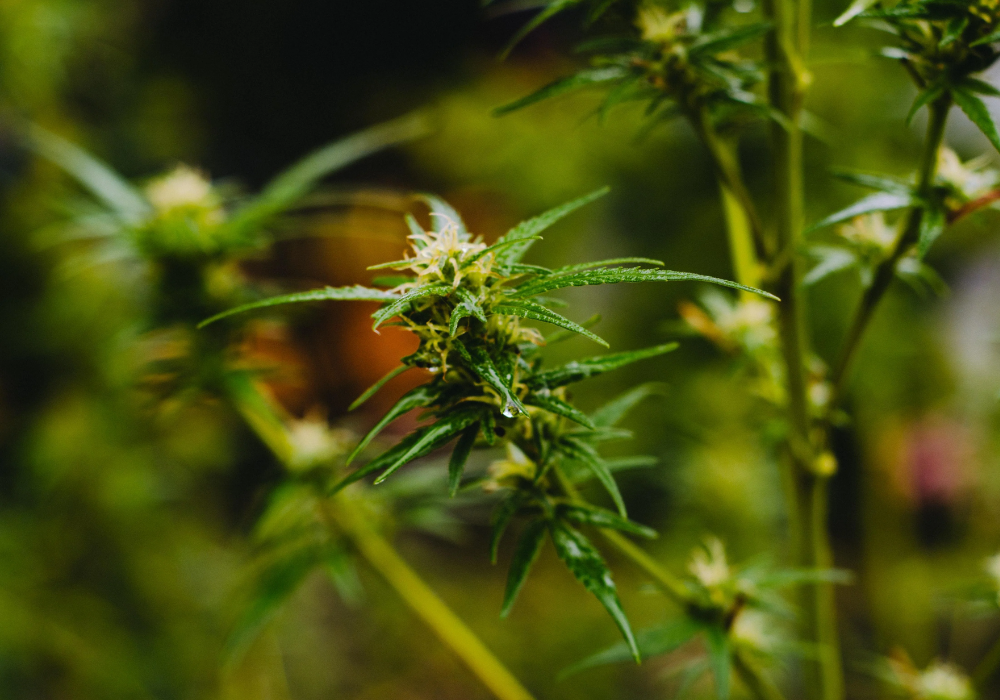A Guide To Terpenes: What Are They And Why Are They Important?

Common terpenes and their effects
Approximately 400 terpenes have been identified in the hemp and cannabis plants, but a select few have been connected to certain effects by experts.
Here are some common terpenes and their potential effects:
- Beta-caryophyllene. A major ingredient in cloves, rosemary, and hops, beta-caryophyllene could be beneficial for managing symptoms of anxiety and depression. When a cannabinoid such as THC is ingested, it primarily binds to CB1 receptors located in the brain and central nervous system, producing a euphoric effect. The unique molecular structure of caryophyllene allows it to easily bind to CB2 receptors primarily located within our peripheral endocannabinoid system. This means that is doesn’t cause any of the euphoric feelings of cannabis while providing many of the benefits associated with activating those receptors, like reducing inflammation. It’s unlike any other terpene because it is the only one that has the ability to directly activate a cannabinoid receptor, especially CB2 receptors.
- Beta-pinene. If you’ve strolled through a coniferous forest, you know the smell of beta-pinene, which could also have potentially both anti-depressant and anti-cancer properties.
- Humulene. This terpene is found in ginseng, which has long been used in folk medicine for energizing effects.
- Limonene. One of the most commonly found terpenes, limonene has distinct citrus notes and may potentially have anti-cancer properties. In mice, it’s been shown to have anti-anxiety properties.
- Linalool. Lovers of lavender as aromatherapy may want to seek out cannabis with linalool, which may help alleviate stress.
- Myrcene. Found in mangoes, myrcene has antifungal and antibacterial properties and could also have sedating effects. Veteran users prefer potent strains high in myrcene. Some of the most popular potent strains are OG Kush, Cookies and Cream, Strawberry Banana. They provoke pleasant effects like giggle, hunger, creativity, relaxation, euphoria
Keep in mind that much of the research around terpenes is still in early stages. More high quality studies in humans are needed to fully understand the health impacts of different terpene profiles.
When it comes to hemp oil and the cannabis plant as a whole, we talk a lot about the different cannabinoids and their properties but what about Terpenes? While cannabinoids are partially responsible for the specific effects we expect when we consume hemp or other hemp derived products, Terpenes also play a vital role in the effects we feel from hemp. But what are they really?
What are Terpenes?
Simply put, terpenes are the compounds found in plants that give them both their taste and smell. While terpenes are found in all plants, they are most recently being discussed in regards to their properties within the cannabis plant. In nature, terpenes play an important role in the survival of plants by either attracting pollinators (i.e. bees to flowers) or repelling predators such as insects or animals.
When it comes to terpenes in the cannabis plant, terpenes are thought to be partially responsible for the benefits many experience when taking hemp oil or using hemp derived products. There have been over 100 terpenes discovered within the hemp plant, each with its own unique properties.
Popular Terpenes
There are over 20,000 terpenes found in nature with over 100 discovered in the cannabis plant so far. Let’s take a look at some of the most common terpenes found in cannabis and hemp.
Limonene
As you may have guessed from it’s name, Limonene has a citrus aroma and is known for its stress and anxiety reducing benefits. It is said to help elevate one’s mood and provide stress relief.
This terpene can also be found in the rinds of lemons and oranges, juniper, and peppermint.
Myrcene
One of the most common terpenes found in cannabis, Myrcene is thought to provide calming effects as well as a reduction in pain, inflammation, and insomnia.
The Myrcene terpene can also be found in mango, thyme, and lemongrass.
Pinene
Another very popular terpene and famous aromatic smell common around the holidays is Pinene. This woodsy terpene is responsible for the beloved smell of pine and is thought to aid in promoting memory and alertness, while also reducing pain, inflammation, and anxiety.
Pinene can also be found in pine needles as well as common herbs such as rosemary, dill, and parsley.
Linalool
One of the world’s most famously calming smells, Linalool is the terpene behind the every-popular scent of lavender. As many of us know, lavender is wonderful at promoting relaxation and a sense of calm. Additionally, Linool may also have antimicrobial, anti-inflammatory, and antidepressant properties.
This terpene is almost exclusively found in the lavender plant.
Beta-Caryophyllene
Common in many herbs and vegetables, Beta-Caryophyllene is thought to provide very powerful anti-inflammatory benefits. Studies have found that this terpene may be able to reduce pain and inflammation as well as nerve pain.
With its woodsy, pepper aroma this terpene can also be found in black pepper, cinnamon, and cloves.
Humulene
Mostly found in hops, the Humulene terpene may have anti-inflammatory benefits that pose significant potential in preventing and managing allergic reactions as well as asthma some studies suggest. There have also been studies showing this terpene may also be able to provide some protection against cancer on a cellular-level.
In addition to hops, Humelene can also be found in herbs such as cloves, basil, and coriander.
Ocimene
With a bright, herbal scent Ocimene is commonly used in perfume and is known to have antiviral and antibacterial benefits. It is said to have uplifting and anti-inflammatory properties. Additionally, a 2013 study showed that Ocimene may also be able to help treat symptoms of diabetes.
With its pleasant aroma, Ocimene is commonly found in kumquats, basil, mint, mangoes, and orchids.
What is the difference between Terpenes and Cannabinoids?
Now that we have a better understanding of what Terpenes are, let’s take a look at the difference between Terpenes and Cannabinoids. As you can tell, they both play a role in the effects we may or may not feel from CBD or THC. In fact, they actually work together to produce what is known as the “Entourage Effect”. The entourage effect is what occurs when cannabinoids, terpenes, and all other compounds found in the cannabis plant work together to produce a well-rounded effect. In terms of CBD, the Entourage Effect is most common with broad and full spectrum CBD that keeps all terpenes and compounds (other than THC, typically) intact. This allows for CBD to truly work all of its “magic” and produce the full healing effects many people rely on it for.
Since different terpenes provide different effects, terpenes can either enhance or downplay the effects of different cannabinoids. In fact, many CBD brands will add more of certain terpenes to aid in specific healing effects. For instance, a sleep CBD tincture may include more linalool to promote a restful night of sleep.
With over 100 terpenes discovered within the cannabis plant, each with their own specific properties the potential therapeutic properties they hold are still being unearthed. Coastal Hemp offers a variety of THC-free broad spectrum CBD products that provide the full entourage effect to enhance benefits.
THC and CBD are just two of over 100 cannabinoids found in cannabis, however they are the two most abundant cannabinoids and the most well studied.
Both cannabinoids and terpenes can give you some clues about what to expect from a cannabis product, but they’re two different compounds.
That said, they all appear to interact with each other in what experts call the “entourage effect.” This is the hypothesis that the “full spectrum” of cannabis, including all the cannabinoids, terpenes, and other compounds found in cannabis, work synergistically to produce the sensations and effects of cannabis.
In other words, it’s a hypothesis that a little bit of everything might have more benefit than a lot of one thing.
A 2010 study, for example, showed that a combination of CBD and THC was more effective for pain management than THC alone.
In a 2018 study, breast cancer tumors in a Petri dish responded better to a cannabis extract than pure THC on its own. But those synergistic effects were believed to be mainly attributed to other cannabinoids and not terpenes.
This is important to consider if you’re using CBD for therapeutic purposes. If you use a CBD isolate (a product that contains only CBD) and find it doesn’t have your desired effect, it might be worth trying a full-spectrum CBD product, which will also contain terpenes and other cannabinoids, including small amounts of THC.
Learn more about isolate vs. full-spectrum CBD.





Comments
Charles Royal —
Very informative thanks for the information